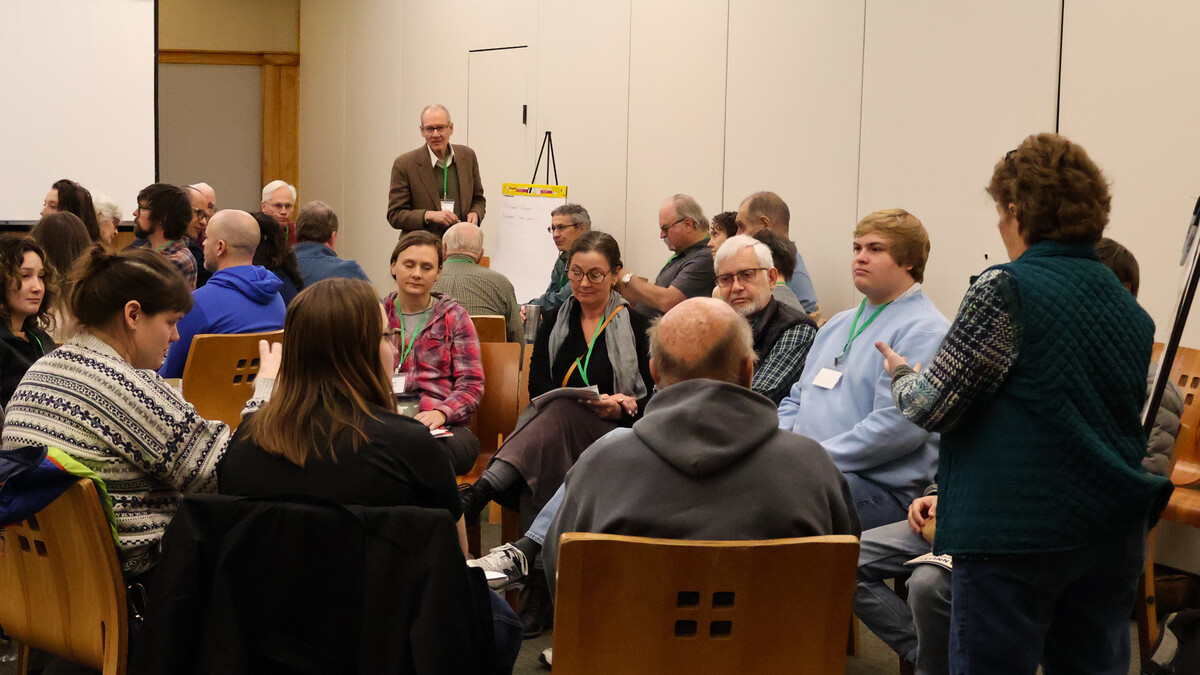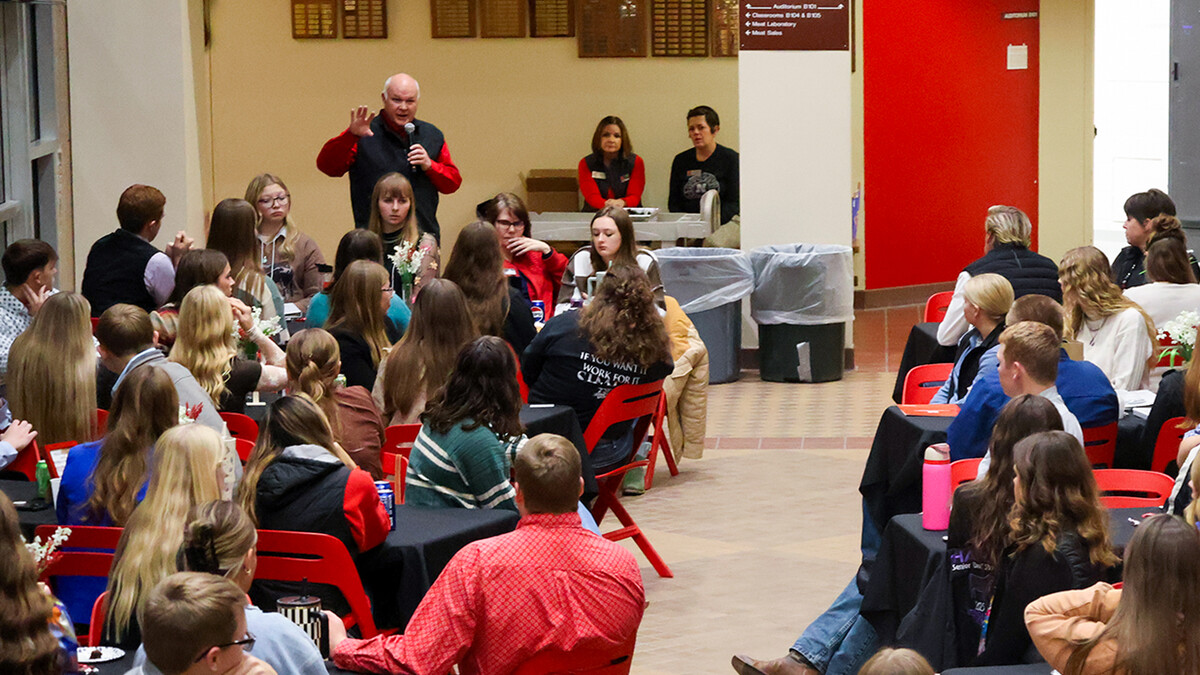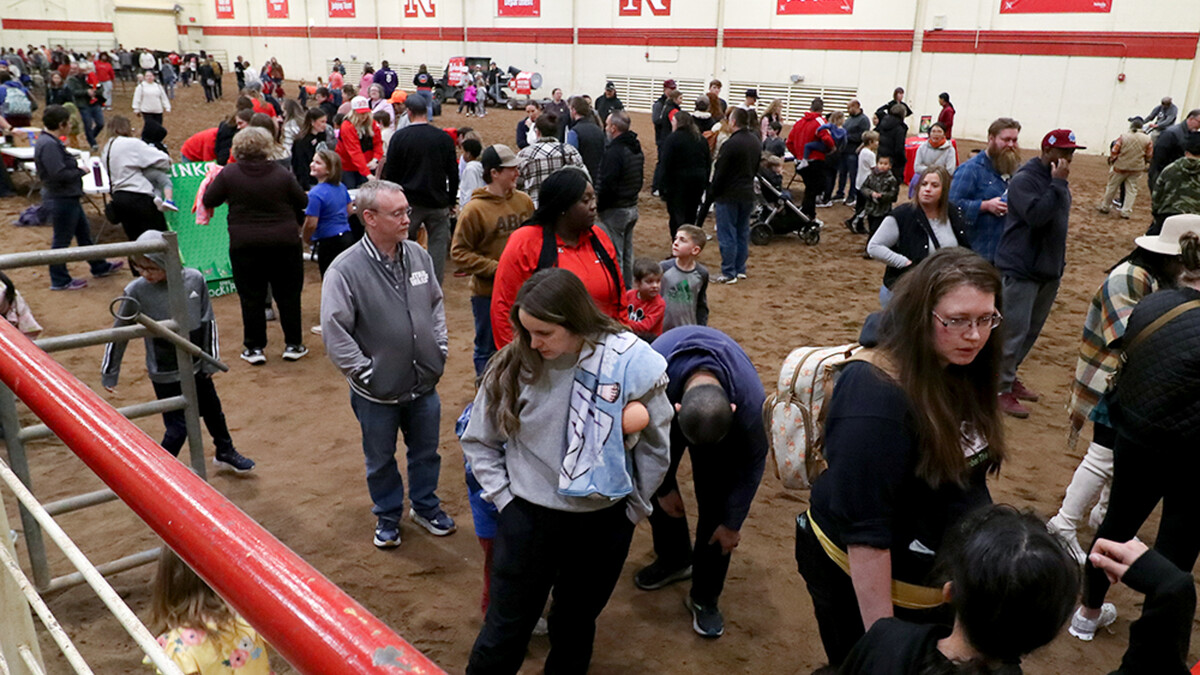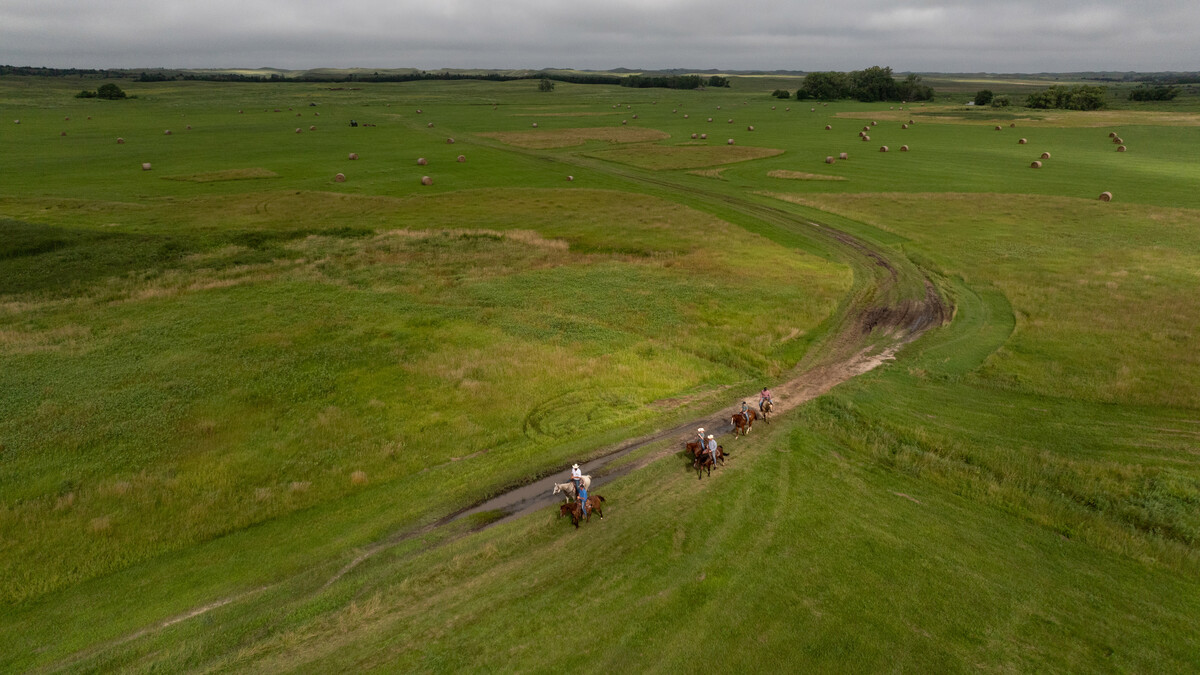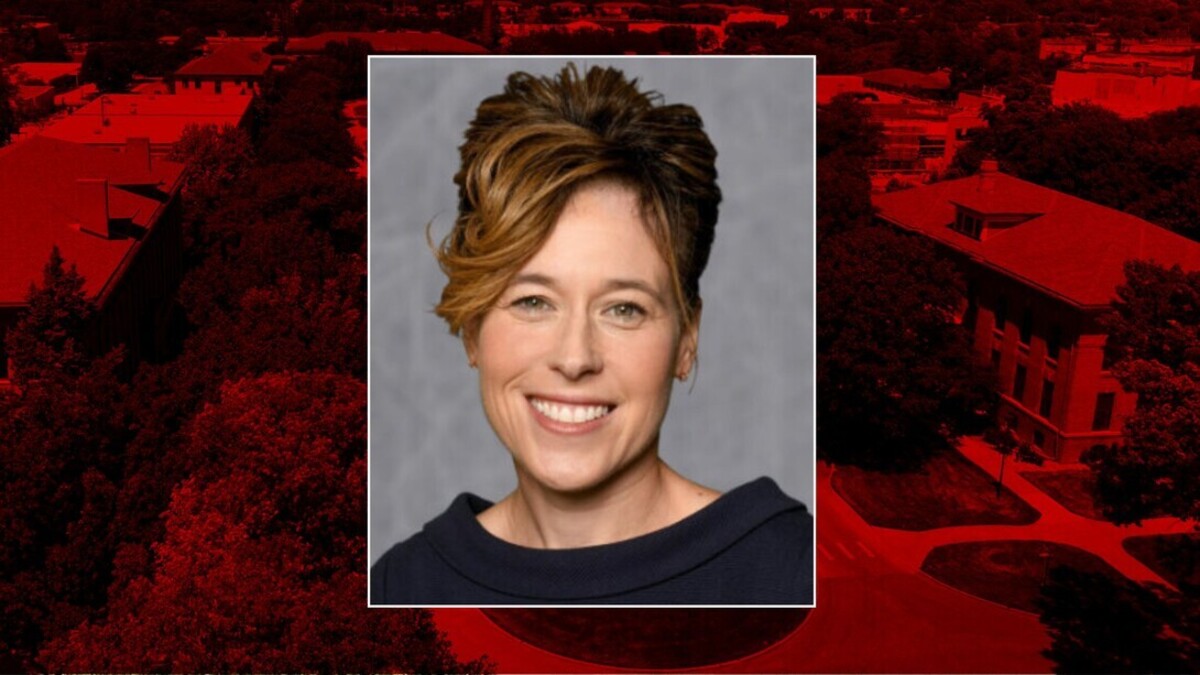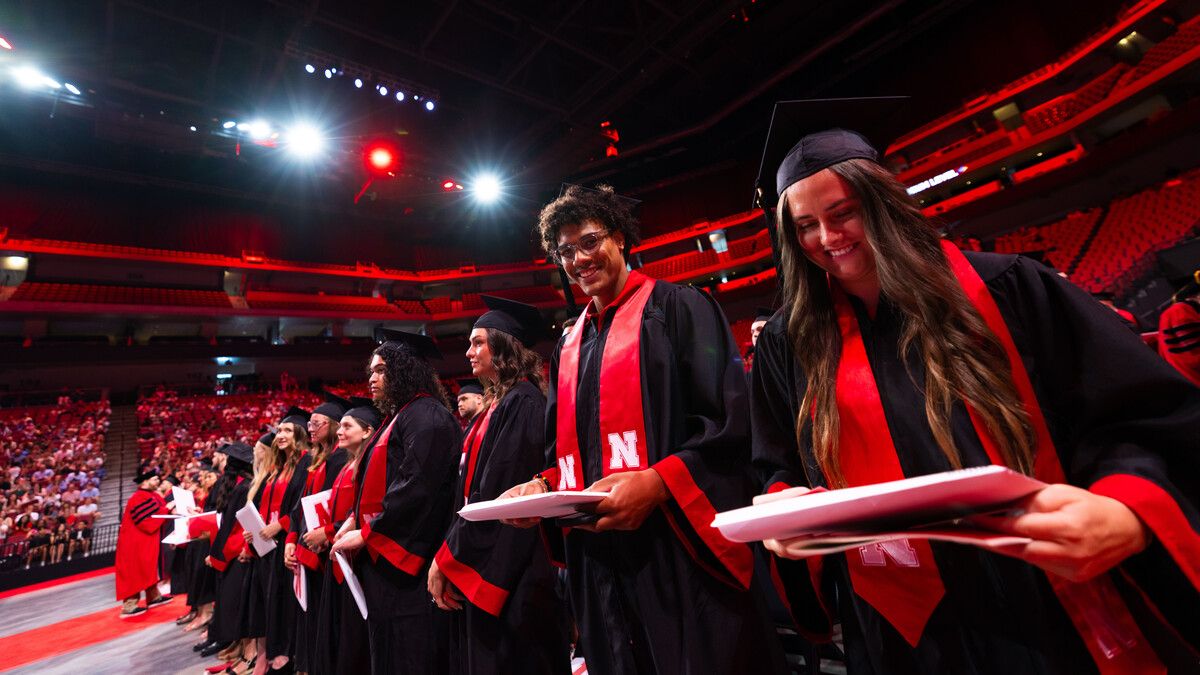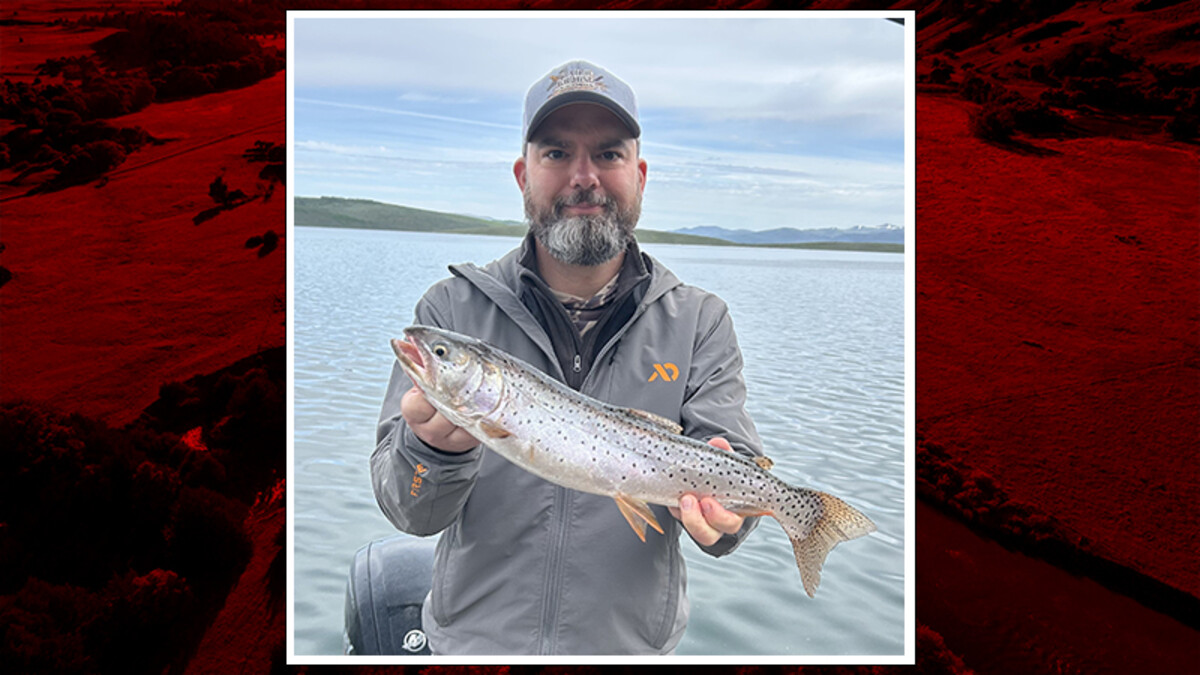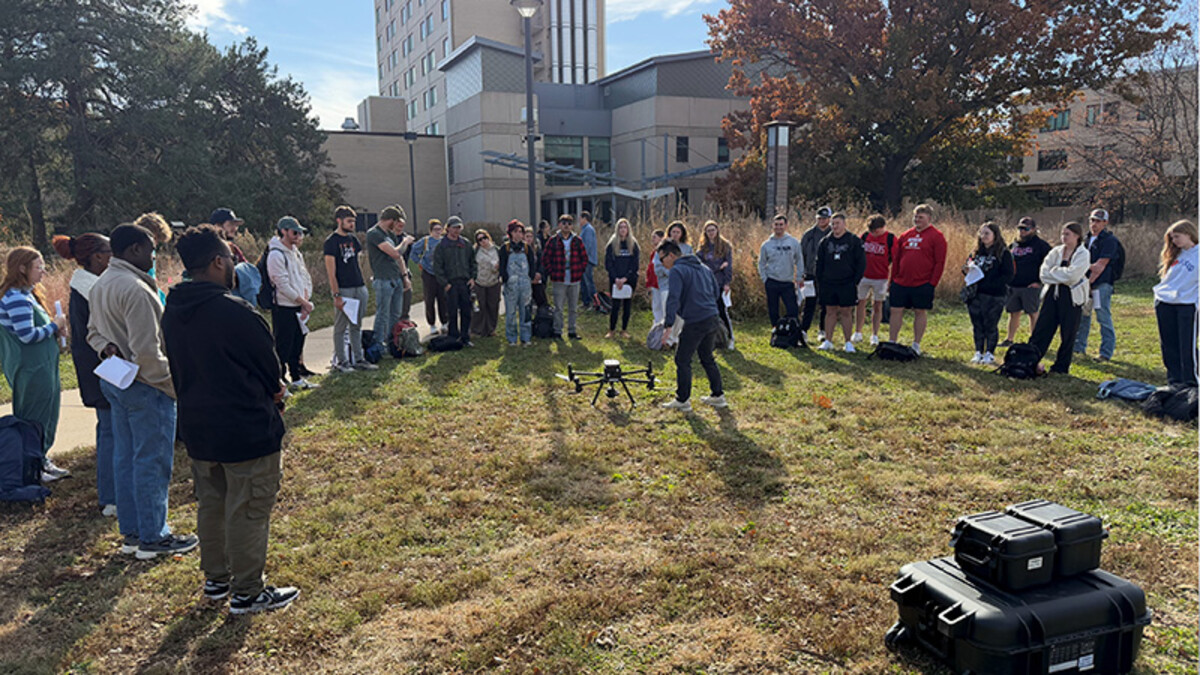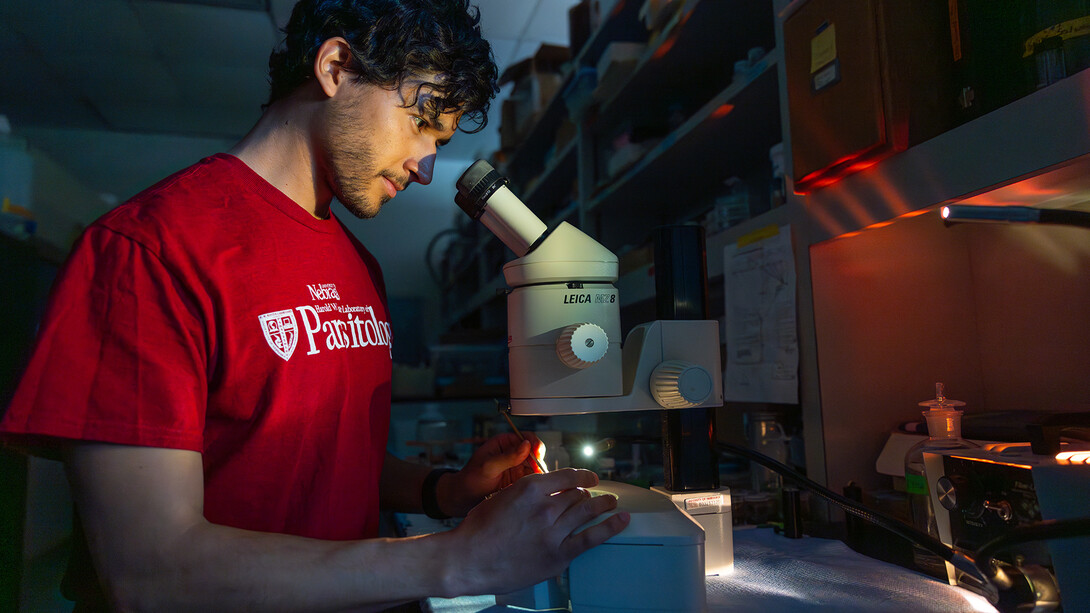
Nature published a May 21 feature on Kevin Liévano-Romero, a fourth-year doctoral student in parasitology at Nebraska. The article was among 60-plus national news stories featuring Husker faculty, staff, students, centers and programs in May.

A Colombia native, Liévano-Romero studies bat parasites and the viruses that infect them — specifically how the viruses affect their hosts’ fitness and susceptibility to infections. After graduating from the National University of Colombia’s veterinary medicine program in 2018, he worked as a veterinarian in Bogotá for three years, periodically helping with biodiversity field surveys and frequently contracting parasitic infections through contact with animals — “all kinds of worms … fleas, lice, ticks … blood parasites because of the tick bites or mosquitoes.”
Over-the-counter medications helped him recover quickly, Nature reported, but he often returned to the concoctions that his family made him as a child when he caught intestinal worms — “smoothies” made of the native paico herb, castor oil and garlic. He would also sleep with eucalyptus leaves under his mattress and spray himself with a liquid mixture of alcohol and tobacco to ward off parasites in the field, the journal reported.
Liévano-Romero decided to pursue a doctoral program at Nebraska after participating in a week-long field course on parasites co-organized by Scott Gardner, curator of Nebraska’s Manter Laboratory of Parasitology, which included a graduate student from Colombia.
“I didn’t think twice, maybe because I was so excited to explore the new world ahead of me,” Liévano-Romero said. “Then I started thinking … ‘Where is Nebraska, exactly?”
Four years later, Nebraska “feels like home” for the doctoral student, who is also an avid runner, dancer, and Spanish translator in a health clinic.
Gardner says Liévano-Romero’s veterinary surgery background is an asset to the lab.
“I think that if you do things with your hands at really minute details, it helps your brain process things further when you’re doing science at higher levels,” Gardner said.
At Nebraska, Liévano-Romero isn’t just doing intricate dissections, Nature reported. He is also tracking and capturing host mammals and drawing accurate scientific illustrations of newly identified parasites. After graduation, he hopes to continue his research in the Manter Lab, although he hasn’t ruled out returning to Colombia.
For the full Nature profile, click here.
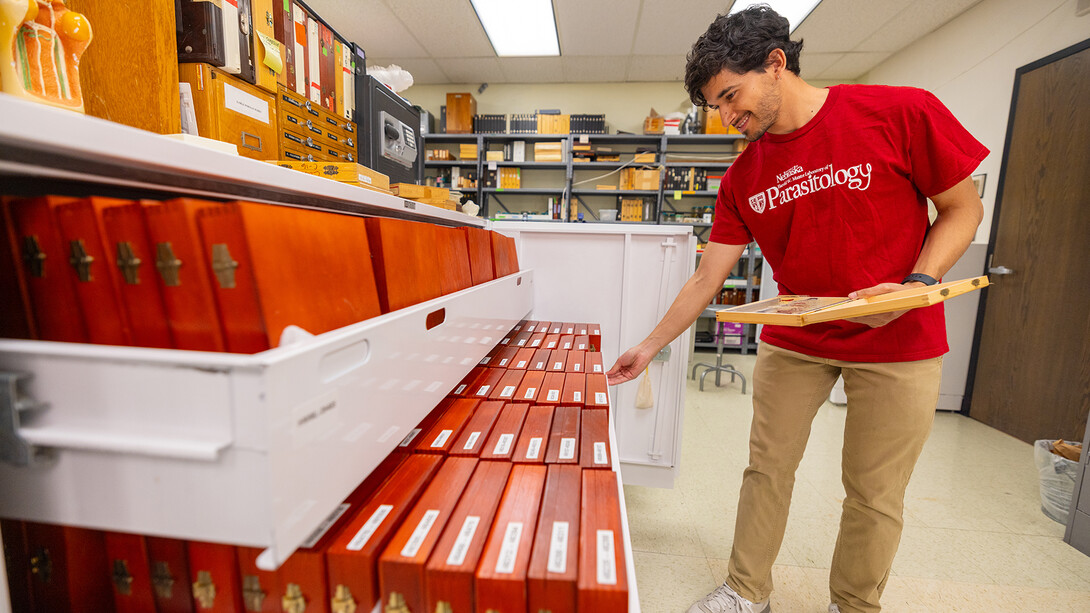
Additional national news coverage in May included:
- S. Carolina Córdova, agronomy and horticulture, was interviewed for a May 1 Business Insider article on more farmers using Internet of Things technology in their operations. “Having sensors in place that monitor properties like moisture, nutrients and pH helps us monitor the soil in real time and manage resources more effectively,” she said. “We could, for example, minimize the application of fertilizers or reduce water use.”
- Eric Berger, law, was interviewed for a May 3 Atlantic article on incarceration practices in El Salvadoran prisons. “The Trump administration has said that it is paying El Salvador to detain these men,” he said. “It is, for all intents and purposes, a joint U.S.-El Salvadoran incarceration program.”
- The U.S. Department of Energy has named Huang Li, biochemistry, as one of 30 “New Investigators” who will receive support to pursue genomic research relating to the bioeconomy. The Fence Post and High Plains Journal ran articles on Li’s selection.
- Michelle Paxton, Schmid Professor for Excellence in Service and director of the Children’s Justice Clinic and Children’s Justice Attorney Education Program, was interviewed for a May 6 segment on RFD-TV. She discussed the university’s efforts to improve legal representation for rural families.
- Nebraska net farm income is forecast to increase 55% in 2025, to a record $9.42 billion, according to new projections from the University of Nebraska–Lincoln and University of Missouri. It would be the highest nominal farm income level on record for the state and the third highest after adjusting for inflation, according to the Spring 2025 Nebraska Farm Income Outlook. Stories on the projections appeared in at least nine Nebraska media outlets, as well as Brownfield Ag News, Farms.com and The Fence Post.
- Richard A. Wilson, Charles Bessey Professor of plant pathology; Nisha Rokaya, doctoral student in plant pathology; and Erin Carr, postdoctoral research associate in chemical and biomolecular engineering, are part of a research team that has created a synthetic lichen system designed to imbue concrete with self-healing capabilities. Articles on the research appeared in Interesting Engineering, Science Alert and Scienmag.
- The Heartland Robotics Cluster was featured in a May 7 Silicon Prairie News article. The College of Engineering, Nebraska Innovation Studio, Nebraska Manufacturing Extension Partnership and The Combine are partners in the cluster.
- Farm Progress published a May 8 article on FuturHerd Solutions’ Nursery Nanny, a self-driving robot aimed at improving nursery pig health. The company was co-founded by Brooke Parrish, an animal science graduate student at Nebraska, who was interviewed for the article.
- Sixty-five Husker students recently earned undergraduate certificates in sales excellence and were honored at a May 2 luncheon hosted by the Center for Sales Excellence, Patch.com (Northbrook, Illinois) and the Yankton (South Dakota) Daily Press and Dakotan reported.
- Kelli Boling, advertising and public relations, was interviewed for a May 10 CNN article on the slate of high-profile criminal trials this spring and summer. “The advent of social media and the 24/7 news cycle has made it very possible for all people to get more involved in current criminal trials, crime content, crime coverage, especially the coverage of ongoing, actual trials,” she said. Audiences can engage “much more easily than they could even 20 years ago,” she said.
- Husker scientists continue to advance the understanding of sorghum’s natural defenses, new findings that can strengthen crop resistance to a major pest threat, the fall armyworm. The research is led by Joe Louis, Harold W. Eberhard Professor of agricultural entomology. The Fence Post ran a May 10 article on the research.
- Annual flu shots could become a thing of the past under a new vaccine strategy developed and tested by Husker virologist Eric Weaver and his laboratory team. In a new study, the team describes a vaccine that protects against H1N1 swine flu and can also protect against influenza in humans and birds. Stories on the research appeared in at least five Nebraska media outets, Farms.com, The Microbiologist, National Hog Farmer and several other national outlets.
- Brandon Johnson, law, was quoted in a May 12 Bloomberg Law article on an alliance of industry groups attempting to engineer the immediate eradication of National Labor Relations Board precedents set during the Biden administration by capitalizing on President Donald Trump’s claim of control over independent agencies. Although the coalition’s request may seem extreme, Johnson said, it’s something Trump’s February directive clearly invited.
- Customers of the university’s Loeffel Meat Shoppe could support the local community with their ground beef purchases in May, which was National Beef Month. As part of the shop’s “buy one, give one” promotion, for every pound of ground beef sold during the month, the store donated a pound of ground beef to local organizations that help feed those in need. The Fence Post ran a May 12 article on the promotion.
- Byron D. Chaves, food science and technology, was interviewed for a May 15 Newsweek article on a voluntary recall of ice cream and frozen yogurt products by Wells Enterprises due to the possible presence of plastic. “Hard plastic … may originate from ingredients like toppings or from utensils such as mixing paddles,” he said. “Such incidents can indicate a breach in supplier controls and good manufacturing practices. In rare cases, packaging materials may be the source.”
- Elizabeth Niehaus, educational administration, was interviewed for a May 15 Inside Higher Ed article on the Foundation for Individual Rights and Expression’s new Students Under Fire report. Niehaus said she disagrees with what she considers the thesis of the report: that students seeking punishment for their peers’ racist — but constitutionally protected — speech in the early 2020s inadvertently laid the groundwork for college and government administrators cracking down more broadly on protected student speech regarding Israel’s war on Gaza.
- Kathy Anderson, animal science, discussed the Race Nebraska program during a May 20 segment on RFD-TV. The Nebraska Extension program aims to bolster equine education and horse racing in the state.
- Silicon Prairie News published a May 21 article on the inaugural Nebraska Innovation Fellows — Amlan Balabantaray, Brooke Bode, Teresa Monsees and Riley Reynolds. The fellows and John Strope, program coordinator, were interviewed for the story. The Rural Radio Network ran a similar article May 3.
- Small meat processing plants in Nebraska and across the country are invited to apply for Nebraska Extension’s 2025 Small Meat Processor Management Training Program, Sept. 7-13 on East Campus. Articles on the program appeared in the Norfolk Daily News, Meat and Poultry, The National Provisioner, Progressive Farmer and Tri-State Livestock News.
- Bruce Dvorak, civil and environmental engineering, was quoted in a May 25 Consumer Reports article on water softeners. “A good practice is not to have your soft water plumbed to your cold water tap in the kitchen,” he said. “People tend to prefer the taste of the hard water.”
- Mary Drewnoski, animal science, wrote a May 27 guest column for Hay and Forage Grower titled “Is virtual fencing the future?” “While no virtual fencing system is 100% effective when it comes to containment — and therefore shouldn’t replace perimeter fencing — it can offer a lot of possibilities for grazing management,” she wrote.
- The Fence Post ran a May 27 article on Hayden Hoos, a second-year veterinary medicine student at Nebraska. Hoos, who grew up on a ranch south of Rushville, Nebraska, discussed some of the challenges facing the beef industry.
- Robert Wilson, School of Natural Resources, was interviewed for a May 29 Oregon Public Broadcasting story on a Canada goose and greater white-fronted goose guarding a nest together at a park near Portland. Wilson said it’s possible the white-fronted goose decided to stay in the park, rather than migrating farther north, because it was injured. The goose also might have been raised by Canada geese, Wilson said, and sought a mate that looked like its foster parents. The story was picked up by 70-plus NPR affiliates.
- The Nebraska Rural Poll — the longest-running survey of its kind — is celebrating its shaping of discussions on economic development, public policy and quality of life across the state through the release of its 30th anniversary survey. The Rural Radio Network and Tri-State Livestock News have run stories on the poll.
- Joseph Yesselman, chemistry, was interviewed for a May 30 Nature Methods article on the growing toolbox of techniques helping researchers understand the structural complexity of RNA. Yesselman’s lab is developing methods for gleaning 3D structure from conventional dimethyl sulfate-based probing experiments.
- The U.S. Drought Monitor — produced jointly by the university’s National Drought Mitigation Center, the National Oceanic and Atmospheric Administration and the U.S. Department of Agriculture — was mentioned in a May 30 Space.com article on U.S. climate scientists hosting a 100-hour YouTube livestream in response to research funding cuts. The loss of federal funding could have dire consequences for the monitor, the article stated.
- A Nebraska Engineering team is another step closer to developing soft robotics and wearable systems that mimic the ability of human and plant skin to detect and self-heal injuries. The team includes Eric Markvicka, Robert F. and Myrna Krohn Assistant Professor of Biomedical Engineering, and graduate students Ethan Krings and Patrick McManigal. Stories on the research appeared in KLKN, Bioengineer.org, Interesting Engineering, ScienceDaily, Scienmag and 25-plus other media outlets.
- A 2017 study by John Kiat, then a doctoral candidate in psychology, and Jacob Cheadle, a former Husker sociologist, was highlighted in a May 31 Inc. article. The researchers were able to map brain functions to show that empathy is altered by putting a name to a face.
Faculty, administration, student and staff appearances in the national media are logged at http://newsroom.unl.edu/inthenews. If you have additions to the list, contact Sean Hagewood at shagewood2@unl.edu or 402-472-8514. If you have suggestions for national news stories, contact Leslie Reed at lreed5@unl.edu or 402-472-2059.
